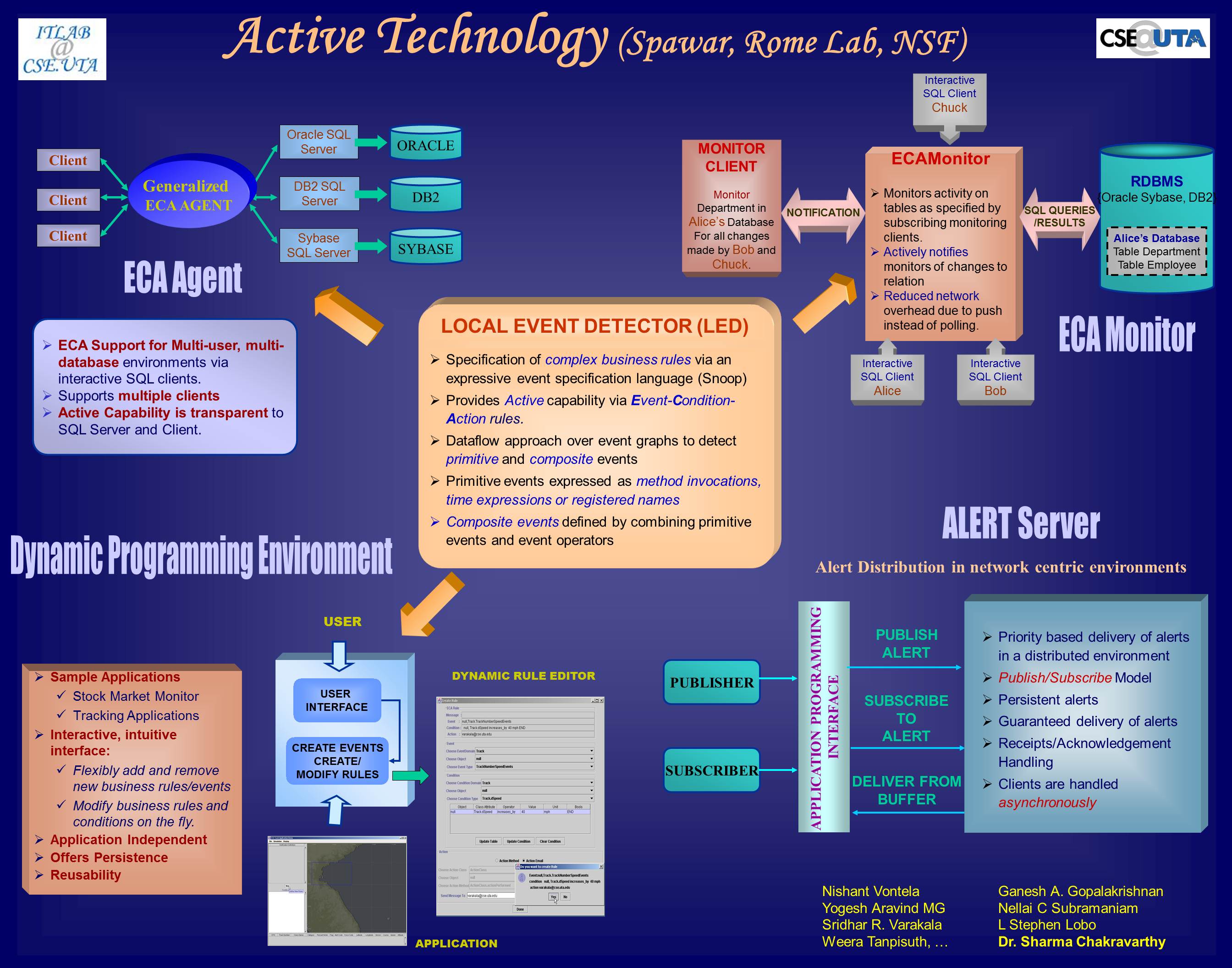
Skip to content. Skip to main navigation.




Currently, R & D in the area of active databases is along the following directions:
Our work on active databases started with the HiPAC project at CCA/XAIT has continued with the Sentinel project at UFL and now at UTA. Currently, we have an expressive event specification language Snoop, a seamless design for incorporating event-condition-action (ECA) rules into an object-oriented framework, and the implementation of Sentinel -- an active Object-oriented DBMS using Open OODB from Texas Instruments, Dallas. Sentinel is perhaps the first effort that has addressed systems and implementation issues for incorporating active capability into an object-oriented system. Complex event detection and nested transactions (as a 2 level transaction management -- by Exodus for top level transactions and by Sentinel for nested transactions without recovery) for executing rules concurrently have been implemented and integrated into Open OODB. We have also investigated optimization of ECA rules using incremental updates.
The use of active capability heavily depends on tools and methodology for formulating and testing large ECA rules. For this both static analysis tools and run-time visualization tools are critical. A high-level rule visualization/explanation tool has been developed for understanding ECA rule interaction with transactions.
We have also investigated the use of active capability in a broader scope. We have shown how active capability can be exploited at the system level to support advanced transaction models.